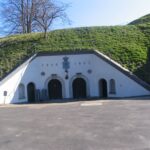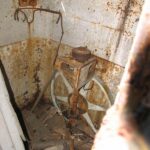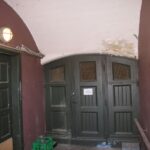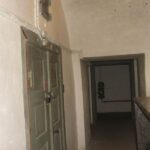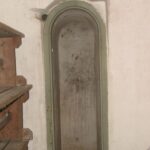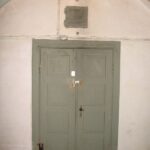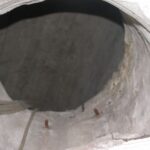The Charlottenlund Battery was built during the years 1886 to 1888. After a remodeling in 1910 it was named the Charlottenlund Fort.
The fort is 300 meters long and 130 meters wide.
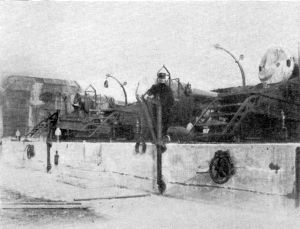
The Charlottenlunf Fort
The ammunition magazine was originally located on the right side of the face and was covered with 30 meters of soil. From the storage, the ammunition could be carried to the concrete gun emplacements through two tunnels.
North of the large traverse there was another traverse as well as there were smaller traverses between th guns, dividing them in pairs.
There were no shelters for the crew, only some wooden barracks on the terrain.
However, there was a casemate in the southwest corner of the large travers.
The Fort was rearmed.
Originally, the battery was equipped with two 35.5 cm. cannons on each side of the large travers.
Also two 15 cm. cannons north of the northernmost of the two heavy cannons and on each wing a 47 mm. quick firing cannon.
The battery had two 90 cm floodlights and 2 distance meter stations.
Accommodation for the crew.
At the remodelling in 1910, a casemate building with engine rooms and 7 rooms for accommodation of the crew was constructed. These accomodations were situated in connection with the 5 existing ammunition magazines in the large travers.
More artillery.
Towards the seaside, the equipment was changed. Two 120 mm cannons and four 29 cm. howitzers were mounted on concrete foundations south of the large traverse.
North of the large travers, four 29 cm. howitzers were mounted in one battery. North of this, divided by a traverse with an ammunition storage, further four 29 cm. howitzers and two 120 mm. cannons.
On the rampart at the throat, turned to the landside, two 37 mm. Hotschkiss revolving cannons were mounted.
Stored cannons.
At the fort there were two 75 mm. cannons further , stored in cannon sheds on terrain. They could be used form the ranpart round the throat.
For close combat there were 10 maschine guns.
The defense of the wet moat consisted of 3 flanking caponieres.
World War I
During World War I, concrete faundations was made for further two 17 cm. cannons on the large travers. However, these were never mounted.
A 47 mm. balloon cannon (anti air craft gun) was mounted on af corcrete foundation on the large travers.
The Charlottenlund Fort was further provided with two 150 cm. floodlights. 1 in an elevator in the northern part of the large traverse and one on a rail track at the foot of the large travers.
The exterior
- 29 cm. howitzers
- Emplacement for revolving canon
- The casemate building
- Hatch for floodlight
- Turret for distance meter
- The turret inside
- Bridge to the fort
- Gun emplacement
The interior
- The entrance
- Corridor
- Corridor at the accomodations
- Behind the ammunition magazine
- Accommodations
- Base for turret
- Inside caponiere in the moat




